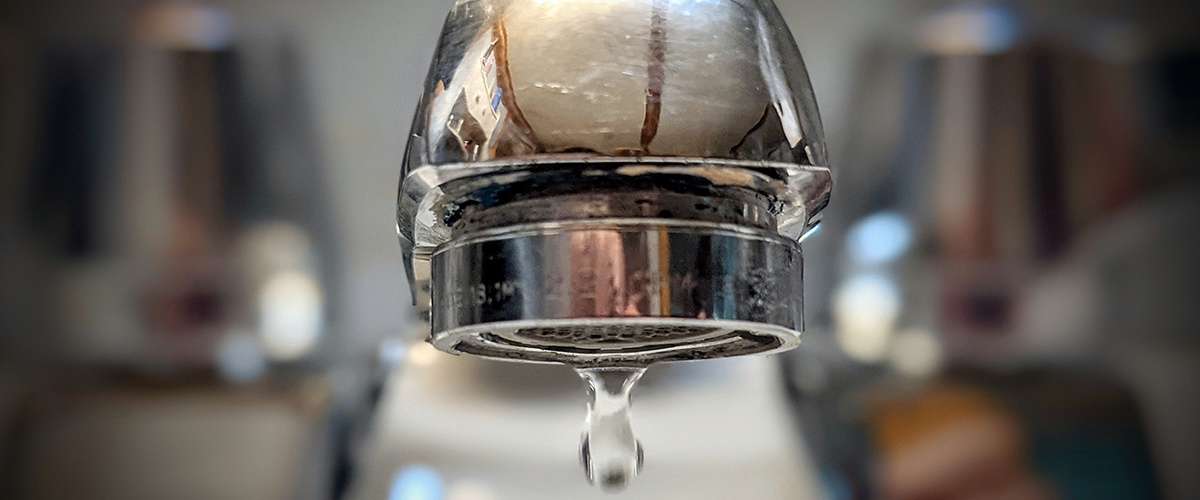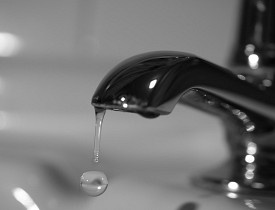Your Explanations Behind Correcting a Leaking Faucet
Your Explanations Behind Correcting a Leaking Faucet
Blog Article
The publisher is making a number of great points related to Leaky Faucets: Why They Happen & What to Do About Them as a whole in this article directly below.

Dripping taps may appear like a small trouble, however their influence goes beyond simply the annoyance of the sound. From wasting water to sustaining unneeded financial costs and health risks, disregarding a trickling tap can bring about various consequences. In this short article, we'll explore why it's vital to resolve this typical family issue promptly and effectively.
Wastage of Water
Environmental Influence
Trickling taps add substantially to water waste. According to the Environmental Protection Agency (EPA), a single tap leaking at one drip per second can waste more than 3,000 gallons of water per year. This not just pressures water resources however likewise influences ecosystems and wildlife dependent on them.
Financial Expenses
Raised Water Expenses
Beyond the environmental impact, dripping faucets can blow up water costs substantially. The collected wastefulness with time translates into higher utility expenses, which could have been prevented with timely repair work.
Prospective Residential Or Commercial Property Damage
Moreover, prolonged trickling can bring about harm to components and surfaces bordering the faucet. Water accumulation can create discoloration, rust, and even architectural problems if left unattended, causing extra repair work costs.
Wellness Problems
Mold and Mold Growth
The constant existence of moisture from a trickling faucet develops a perfect setting for mold and mold growth. These fungis not only jeopardize indoor air high quality yet also present wellness risks, specifically for people with respiratory system conditions or allergies.
Waterborne Conditions
Stagnant water in dripping taps can become a breeding place for germs and other virus, enhancing the threat of waterborne illness. Pollutants such as Legionella microorganisms flourish in stationary water, potentially bring about major ailments when ingested or breathed in.
Do it yourself vs. Professional Repair
Pros and Cons of Do It Yourself Repair
While some might attempt to fix a leaking tap themselves, DIY fixings come with their very own set of challenges. Without proper expertise and tools, DIY efforts can worsen the issue or bring about insufficient repairs, lengthening the issue.
Benefits of Employing a Professional Plumber
Working with a professional plumber makes sure that the underlying cause of the leaking tap is dealt with properly. Plumbing technicians have the competence and tools to identify and fix tap issues effectively, conserving time and decreasing the risk of further damage.
Step-by-Step Guide to Taking Care Of a Dripping Tap
Devices Called for
Prior to trying to fix a dripping faucet, gather the required tools, including an adjustable wrench, screwdrivers, substitute components (such as washing machines or cartridges), and plumber's tape.
Typical Tap Issues and Their Solutions
Determine the type of faucet and the particular issue causing the drip. Usual issues include damaged washers, corroded shutoff seats, or damaged O-rings. Refer to maker guidelines or online tutorials for step-by-step support on repair work.
Preventive Measures
Normal Upkeep Tips
To stop dripping faucets, carry out routine maintenance such as cleaning up aerators, checking for leakages, and changing damaged components without delay. In addition, consider installing water-saving devices or upgrading to more efficient components.
Significance of Prompt Fixes
Dealing with dripping faucets as quickly as they're discovered stops more water wastefulness and potential damage, inevitably conserving both water and money over time.
Influence On Building Worth
Perception of Well-Maintained Property
Keeping a residential property in good condition, including resolving maintenance problems like dripping faucets, improves its regarded value and value among possible buyers or lessees.
Impact on Resale Value
Properties with well-maintained plumbing fixtures, including taps, command higher resale worths in the realty market. Addressing leaking taps can contribute to a positive impression throughout home evaluations and settlements.
Environmental Obligation
Individual Contribution to Conservation
Taking duty for fixing dripping faucets aligns with broader initiatives toward water conservation and ecological sustainability. Every person's activities collectively make a substantial impact on maintaining valuable sources.
Sustainable Living Practices
By focusing on prompt fixings and embracing water-saving practices, people contribute to lasting living methods that benefit both present and future generations.
Verdict
Attending to a dripping tap exceeds simple ease; it's a necessary step toward conserving water, reducing economic prices, and securing health and wellness and residential property. Whether with DIY fixings or expert support, taking action to deal with dripping faucets is a tiny yet impactful way to advertise accountable stewardship of resources and add to a healthier, a lot more lasting future.
Most Common Reasons for a Leaky Faucet and How to Stop the Drip
Whether it’s your kitchen faucet leaking or a bathroom faucet leaking, one leaky faucet can waste anywhere from three to 30 gallons of water every single day. If the constant drip-drip-drip doesn’t get your attention, your water bill will. The good news is that, by following a few simple steps, chances are pretty good you can fix the problem yourself.
Why is it dripping?
Before you start taking things apart, let’s break down some of the most common causes of a leaky faucet.
Bad O-ring.
A cartridge is a valve that controls the flow of water into the faucet spout. On cartridge faucets there’s an O-ring—the little disc attached to the stem screw that holds the faucet handle in place. If it’s loose or worn-out, it can cause your sink handle to leak. Of course, the cartridge itself could be worn out. If that’s the case, make sure you replace it with the exact same kind.
Corroded valve seat.
The valve seat connects the faucet and the spout. If the leak seems to be coming from the spout, it might be because a buildup of water sediment has corroded the valve seat.
Worn-out washers or seals.
A leaky spout could be caused by a bad washer that rests against the valve seat. It’s just a matter of time before friction takes its toll. It could also be the wrong size washer or one that’s been installed incorrectly. Water sediments can also corrode inlet and outlet seals.
Water pressure.
If the faucet only drips now and then, or when you turn the handles a certain way, you should probably check your home’s water pressure.
Loose or broken parts.
The adjusting ring and packing nuts in the stream screw can become loose over time, causing your sink handle to leak. Try tightening or replacing the packing nut. If the leak is coming from the pipes underneath the sink, you probably have a broken pipe or fitting. If that’s the case, you should definitely call a plumber.
Know your faucet.
Faucets come in a variety of types. Each one has its own assembly—and its own possible causes of leaks. Learning about the four most common kinds of faucets will help you know how to take them apart and make any repairs.
How to stop a leaky faucet
Fixing that leaky faucet doesn’t have to take a lot of time, money, or expertise. It’s usually a simple matter of replacing a worn-out washer or gasket, a loose O ring, or another part. Chances are really good you can do this yourself if you follow these simple steps.
Shut off the water.
Before you tackle the faucet, cut off the water supply to the sink. There should be one valve for hot and one for cold. Hand-turn them clockwise with your hands till they close. If there are no valves under the sink, head to the basement and shut off the main water supply to the house. Then turn on the faucet until it empties out the water that’s still in the line and you’re ready to start. It’s a good idea to cover the sink drain with a plug or a rag so you don’t lose any small pieces and parts while you’re working.

I hope you liked our post on Why Are My Faucets Dripping (And Can I Fix It Myself)?. Many thanks for spending some time to read through our piece of content. Sharing is caring. Helping others is fun. I thank you for your readership.
Report this page